What is Essential
October 12, 2009
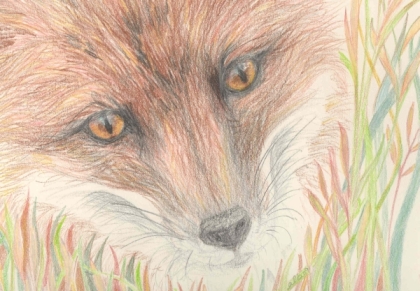
“What must I do, to tame you?” asked the little prince.
“You must be very patient,” replied the fox.
“First you will sit down at a little distance from me – like that – in the grass. I shall look at you out of the corner of my eye, and you will say nothing. Words are the source of misunderstandings. But you will sit a little closer to me, every day…”
. . .
So the little prince tamed the fox. And when the hour of his departure drew near —
“Ah,” said the fox, “I shall cry.”
“It is your own fault,” said the little prince. “I never wished you any sort of harm; but you wanted me to tame you…”
“Yes, that is so,” said the fox.
“But now you are going to cry!” said the little prince.
“Yes, that is so,” said the fox.
“Then it has done you no good at all!”
“It has done me good,” said the fox, “because of the color of the wheat fields.”
. . .
“Goodbye,” said the fox. “And now here is my secret, a very simple secret: It is only with the heart that one can see rightly; what is essential is invisible to the eye.”
The Little Prince, Antoine de Saint Exupery
That Silent Place
June 13, 2009

… deep inside, in that silent place where a child’s fears crouch…
~ Lillian Smith
This drawing was made with Tuscan red charcoal pencil on paper.
Celtic Trinity Knot
May 22, 2009
I love you not only for what you are, but for what I am when I am with you.
~ Roy Croft
This image is very similar to one created earlier and posted as a Triquetra. The design has been altered and colored to be used for a wedding invitation. The quotation and colors were chosen by the couple who are looking forward to a Celtic celebration of their marriage later this summer. Their wedding rings show a similar design.
The drawing was done in fine point black marker and enhanced with gold and silver colored pencils.
Freshwater Shells
May 20, 2009
 Univalves reveal a spiral design that has fascinated artists, biologists and mathematicians throughout the ages. The mathematical equation on which the proportions of this design are based is known as the Golden Mean, Golden Section and the Golden Ratio.
Univalves reveal a spiral design that has fascinated artists, biologists and mathematicians throughout the ages. The mathematical equation on which the proportions of this design are based is known as the Golden Mean, Golden Section and the Golden Ratio.
Although the most excellent example of this ratio is the shell of the Chambered Nautilus, the spirals found in these simple freshwater shells also aspire to similar proportions.
These drawings were made with colored pencils.
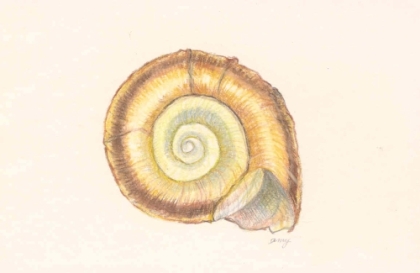
Black Cat
May 11, 2009

There is much mystery and lore surrounding black cats. In some cultures they are considered omens of bad luck, while in others they’re considered good luck.
Here in North America they are supposedly less likely to be adopted at shelters than other cats. At the time we acquired our black cat Joey, we were actively searching for an all black cat. Contrary to what one would believe of black cats, she is gentle and affectionate.
A small group of caring individuals finds new homes for stray cats found around the Fisherman’s Cove area in Eastern Passage. These cats are called Cove Kitties. Our cat Joey’s mother was one such Cove Kitty. She was found pregnant and so Joey was born in the vet clinic. Since then, she’s always been an indoor cat.
Due to problems with allergies among some of our family members, we’re now seeking a new home for Joey. If you live in or near Dartmouth, Nova Scotia, please contact me by email if you’re interested in seeing if she would make a good fit into your household.
Chicken Combs and Wattles
May 6, 2009
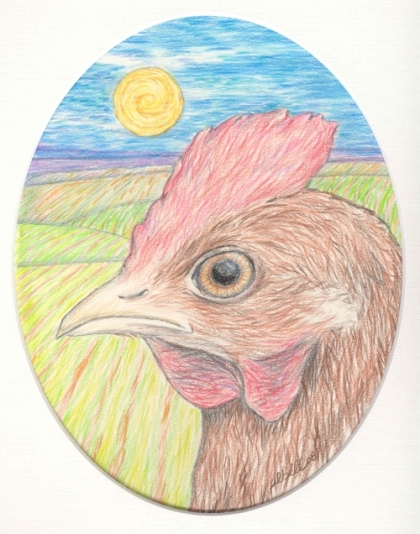 Perhaps it’s because we eat chicken that we don’t take the time to learn more about them. Making a drawing of one is a great way to study some of their features.
Perhaps it’s because we eat chicken that we don’t take the time to learn more about them. Making a drawing of one is a great way to study some of their features.
Both chickens and roosters have combs and wattles. There are many different types of combs, and the ones on roosters’ heads are often, but not always, more prominent. The wattles are folds of flesh hanging beneath their beaks that act as the bird’s cooling system.
Whenever we encounter unusual features on a subject, we’re forced to draw what we see instead of what we *think* we see. Too often we rely on previous knowledge of a subject in order to create a new drawing. We fail to make the most of the present moment to discover something new or appreciate familiar details in a different light. Like any other discipline, drawing only what we see takes focus and attention to detail, but is well worth the effort.
This drawing was made with colored pencils.
Wolf Sketches
May 3, 2009
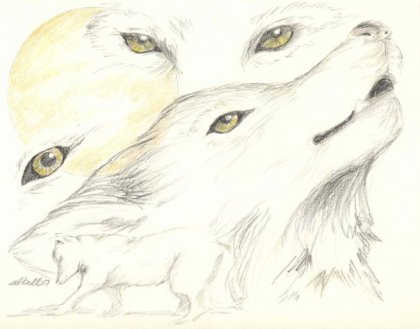
Wolves’ eyes are smart, alert and mysterious. They hold us captive while making us look inward.
To look into the eyes of a wolf is to see your own soul – hope you like what you see.
~ Aldo Leopold
These sketches were made with black charcoal pencil and colored pencil on manila paper.
Triquetra
May 2, 2009

This interlaced triquetra consists of three Vesica piscis and a circle. Over the centuries, it’s found usage in various cultures and religions as a symbol of ‘three in one’ with the circle providing added confirmation of unity and eternity. Personally, I see it as a design done in the Celtic style, made to represent the Christian Holy Trinity.
The almond shapes were created with a compass by overlapping two circles, the circumference of one touching the centre of the other. Knots in the braids were measured so that they begin and end similarly at the points.


 If you truly would wish to learn about any thing in nature, one excellent way to go about it would be to attempt a drawing of it in pencil. Paints and watercolors can be forgiving of detail in a way that pencils cannot. A pencil drawing demands an exact understanding of the subject.
If you truly would wish to learn about any thing in nature, one excellent way to go about it would be to attempt a drawing of it in pencil. Paints and watercolors can be forgiving of detail in a way that pencils cannot. A pencil drawing demands an exact understanding of the subject.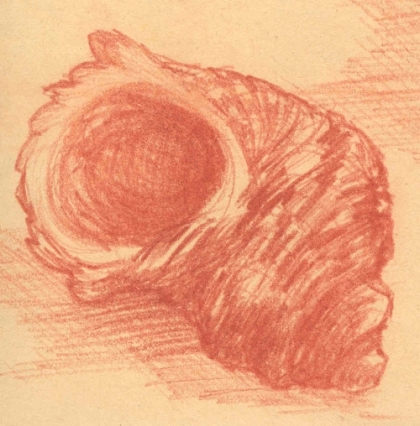 Gladwell’s discovery is a disappointment to anyone who thinks that there is a shortcut to success. Persistence and hard work are more important than talent. I think people who are gifted acquire satisfaction with less effort in the beginning, and so are encouraged to do more. But it is their ongoing practice that helps them achieve success.
Gladwell’s discovery is a disappointment to anyone who thinks that there is a shortcut to success. Persistence and hard work are more important than talent. I think people who are gifted acquire satisfaction with less effort in the beginning, and so are encouraged to do more. But it is their ongoing practice that helps them achieve success.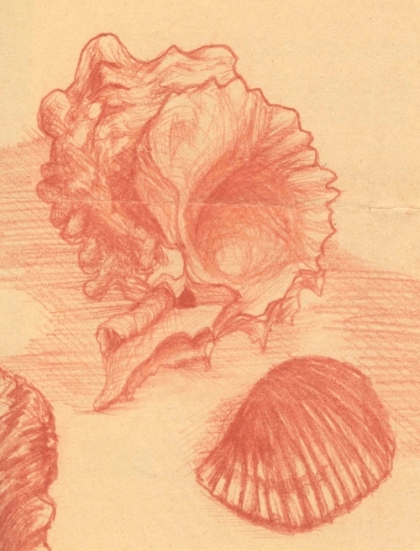 Drawing is a quiet activity that gives both children and adults an opportunity to observe and study nature up close. Nothing more is needed other than a piece of blank paper, a pencil and… patience, something that is only learned through practice.
Drawing is a quiet activity that gives both children and adults an opportunity to observe and study nature up close. Nothing more is needed other than a piece of blank paper, a pencil and… patience, something that is only learned through practice.